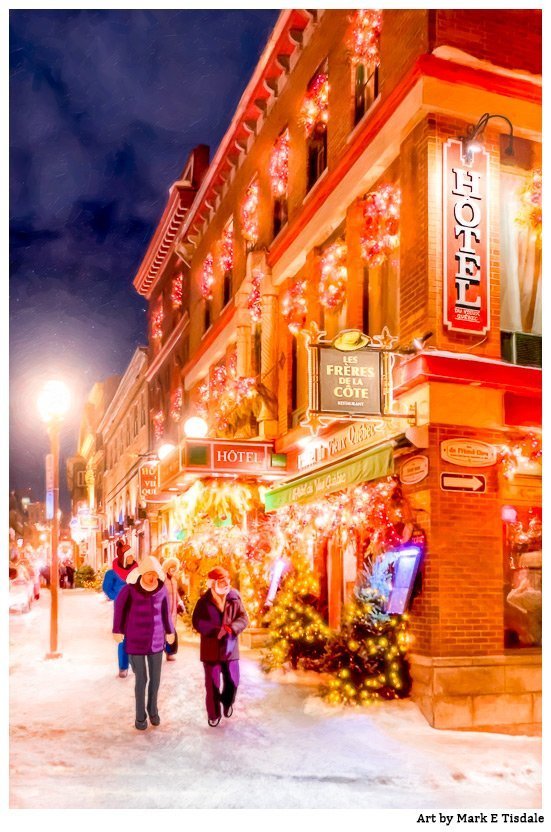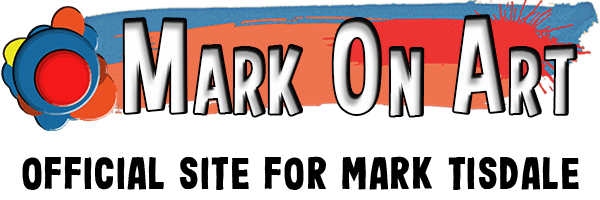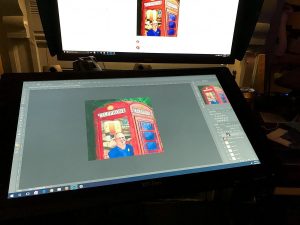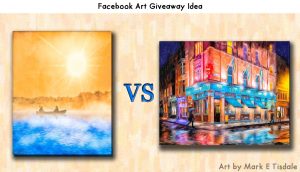Getting Seen – Selling Art Online
I’ve had this topic bouncing around in the back of my mind for well over a month now, and the topic of visibility in selling art online is a huge one. It’s also not a subject in which I’m remotely claiming expertise, but what I have gleaned over the past years might help other visual artists interested in selling art online and sharing that kind of information can only help us all.

Most of my tips for selling art online will be fairly general but some will be with an emphasis on my experience with Fine Art America. I’ll do my best to note where any suggestions are specifically for that site. I guess the reason that Fine Art America is on the top of my mind right now is that I’ve been working on uploading all of my work there for months now. In fact, it’s become one of my over-riding projects simply because it has proven profitable. I won’t say that I’m going over blockbusters just yet, but my work continues to pay me back for the time invested.
Fine Art America is also on my mind because I frequently encounter visual artists who have used the site and complain bitterly that they have had no sales and some suggest that the site is simply too large and perhaps even rigged against newcomers. And when I’m able to take a look at what they are doing, they very often fall into that if you build it they will come school that I commented on last month. You will almost inevitably fight a losing battle if you try the Field of Dreams method of selling art online.
Titles Matter When Selling Art Online
I’ve touched on this most important tip for selling art online before. The title is one of your most important decisions. But not in the way artists often think. We’re encouraged in society to choose metaphorical titles, titles with hidden meaning for the viewer to discover, etc. This decision while poetic makes your art exponentially harder to be found online. If you doubt this, go to Google right now, type in a phrase in the search box and look at the results. Notice something? Unless Google is struggling to find relevant results for your search, virtually all of the bold titles you see in your results will include words from your search.
So, let’s think about what this means as an artist or anyone trying to be seen oline. If I have a picture of a sunset on the beach, my title needs to be literal and should at minimum include that it shows a sunset and a beach. I would recommend if it’s a particular place, you include that detail as well because someone out there may well be searching for a specific locale. If I called my theoretical beach sunset, I don’t know, Exploding Orange, it might be a more noteworthy title, but two things happen. One anyone searching for your particular beach will be unlikely to find it, and secondly people searching for exploding oranges will be disappointed. I’ve actually see this in action. Several years ago, I had a piece in my gallery named what I thought was a fairly poetical title. I later noticed in my stats that I was getting a ton of visitors, I also noticed they were all leaving quickly. No one who found that work stayed to look through the rest of my art. I decided to search for that title myself and discovered that I had inadvertently used a title similar to the name of an -ahem- adult actor. Oops! While I changed that title after my discovery, I regret it took me longer to put the puzzle together and realize the positive value in a properly selected title.
It’s unfortunate that no print on demand site I’m aware of allows one to have an artwork title that is separate from a page title. As it stands on sites like Fine Art America, when you choose a title for your art, you are choosing the words that appear in your browser bar and in the bold title location in search results. When I’ve shared this observation with artist friends in the past, I’ve gotten a mixture of reactions. Some are too attached to their poetic titles. While others like the idea but do a lot of work in one specific subject area and fear that all their art will end up with the same title. On the former concern, I have no solace to offer. On the latter concern, this is actually increased opportunity. I might only have one beach sunset to describe, but if you have dozens, you have more chances to be found. You might use colors, places, etc. to describe the work in further detail in each of your chosen titles. Maybe someone was looking for a picture of a golden sunset on the beach, but another was looking for a print of a fiery red sunset on the beach. I’m being a bit simplistic here, but you get the idea. The title is an important decision whether you are selling art online or trying to be visible in any endeavor on the internet.
Yes, descriptions are also important for selling art online
It doesn’t stop and end at the title, though. Think of it this way, you’ve gotten their attention. Google or pretty much any other search engine has categorized your artwork as being about the subject you gave in the title, but if your description does not echo those terms, it becomes a bit more dicey. Could it be you were misleading people with the title – kind of an internet bait and switch? You said it was beach in the title, but maybe your entire description centered around how much you love the coast. The search engine will likely decide that your offering is of lower value and place you behind other similar results.
Your description is both a place to continue the theme of your title and your chance to connect with a potential buyer. For me, that’s often my account of being there at that moment. I might explain why this particular moment caught my eye. But whatever you do don’t fall into the let the picture speak for itself trap. I can’t tell you how often I discover artists who have left the description box all but bare. Even a few words doesn’t cut it. I’ve read that a round number to aim for is 300 words or more. And in this one area, as someone who is verbose, I have it made as long as I can actually stay on subject!
Sadly but honestly, the person who stops to admire the art you’re selling may never read your words. Yet the words in your description are so important to being found. The search engine needs that text and that text needs to reinforce the subjects in your title. But it should sound natural so that when a person does take the time to read it, they don’t feel as if a machine somewhere churned them out. Think of the exercise as being similar to the paragraphs you learned to write in school. Your first sentence is your artwork title, and it should contain your subject. The description is the rest of the paragraph. It should stay on subject and reinforce that your work pertains to the subject given in the title.
As a side note, for those who are keen to copy text from Wikipedia or the local tourism office’s site, you really don’t want to do that. Aside from the moral conundrum involved, based on everything I’ve heard, you will get dinged for having duplicate content as it appeared elsewhere first. You need to write your own unique description, and if you’re selling art on multiple sites, make sure that text differs from site to site. Now you see why I’m not uploading everything at once, writing all new descriptions takes time!
How Important are Keywords when Selling Art Online?
I guess the answer is, it depends. I see artists on various print on demand sites obsess over keywords more than any other subject. And keywords are probably the subject of more abuse than any other aspect of selling art online on the various sites I’ve used. Some sites have greatly limited how many keywords one can use as a consequence. It’s a result of the mentality that I’ll use every keyword tangentially related to my art (and maybe a few that aren’t) in the hopes of simply being seen and then maybe someone will be wowed and buy my art. The problem is if they were searching for something specific and you didn’t come close to fulfilling that desire, they will probably be like the people that were disappointed in my art with the unfortunate title. It’s not simply a game of getting in front of someone, it’s getting in front of that someone who is looking for what you are offering.
That said, keywords on Fine Art America are important in so much as you should be decisive in your first five keywords chosen. If you look at any given artwork page on Fine Art America, you’ll notice that those first five keywords appear as part of the text immediately beneath your image. Given how physically close they are in the code to your image, that makes those keywords important to search engines like Google (which assume those words describe the picture). I personally make a point of echoing my subject here. If it’s a beach picture, I make sure I include that as one of the first five keywords. More simply, your strongest keywords should be the first five. If you feel you must use every keyword at your disposal, just make sure the less important ones are further down.
Note: Keywords are no longer displayed in the same location on the page as they once were.
So where are keywords important? They are important to being found on the sites themselves. I.E. a visitor to Fine Art America types a phrase in the search box on the site, you hope to be in those first handful of results. That’s not easy on any site. Unless you’ve somehow cornered the market on a subject before anyone else has, you will encounter competition. And despite the clamoring I hear from new artists, you can’t expect these sites to have no algorithm for what appears first. From the site owner’s point of view, they should put their best foot forward for customers. Artwork from an artist who is new to the site is not vetted in any way and quite simply may not be salable. On any print on demand, their search logic onsite naturally veers towards proven work. It might make us all feel warm and fuzzy if they were more egalitarian, but it were your store, I suspect you’d put the most likely to sell art out front as well.
In the end, you won’t win wishing your stuff to the front page of any given art site. You have no control over how Fine Art America or any other print on demand site chooses to present results to their potential customers. So, in my opinion, you’re wasting your time obsessing over their internal search results. Unless you intend on starting your own site, you’re unlikely to get a say!
There is no Magic Bullet for Selling Art Online
I know it may feel like this goes against the whole topic of this article, but I’m just sharing the tools that have helped me improve. I’ve ridden the roller coaster on my own site the past few years, and I started selling on Fine Art America about six months ago and have had consistent sales starting after having been there a couple of months. And now that I’ve got those sales under my belt, when I do search for my work onsite, I’m also coming closer to the top for some of the keywords for my work. The way that site is constructed, it’s sort of a natural progression of getting sales to place closer to the top. That still presupposes people came there to search for your art rather than simply found it on the big search engines which remains my personal top concern. As much as I would like for my own site to place as prominently and will continue to work for that, I have seen the light that you are better off taking advantage of the natural lift created by having well-titled and well-described art for sale on a major player like Fine Art America. It places my art that much closer to the top of the results for someone using a search engine like Google.
I’m not saying this is the the only way to get your work seen. It’s where I place more of my eggs because I’m slowly getting the knack. If you’re a social butterfly, of course, there’s always the chance to interact with people on various social networks and forums. I won’t be writing any novellas on that subject in the foreseeable future, though! Although it probably just scratches the surface, I hope the practical tips I’ve shared has helped some of you who are aspiring at selling art online, though?








Great article Mark – and even very relevant for me at the minute. I spent the weekend changing filenames and titles this weekend on dozens of different images after realizing that the original titles weren’t suited to a google image search. I am now finding that some of my images are showing up on top three rows. One of the ways i approached it was to look at an image that i would consider *should* be successful, and try to imagine i was buyer and looking for an artwork just like it – that’s what had driven the new titles.
I also fully agree with the 300 words of copy, which am faithfully following for each image gallery page.
Glad it turned out to be so timely Ray!
I wish it were easier to always get into the minds of the audience. I have gleaned a little using Google adwords – not to place ads but to get an idea what phrases people use to search. Every so often that’s lead to a kernel of good information.
So far, I find there’s a lot of trail and error inherent! Sometimes you have a home run. Other times, you have a lot of people coming to your site and not finding what they expected – lol!
Great advice, Mark! I’m glad I read this before I started uploading. I feel like such a newbie when it comes to this stuff.
Glad it has helped Christy!